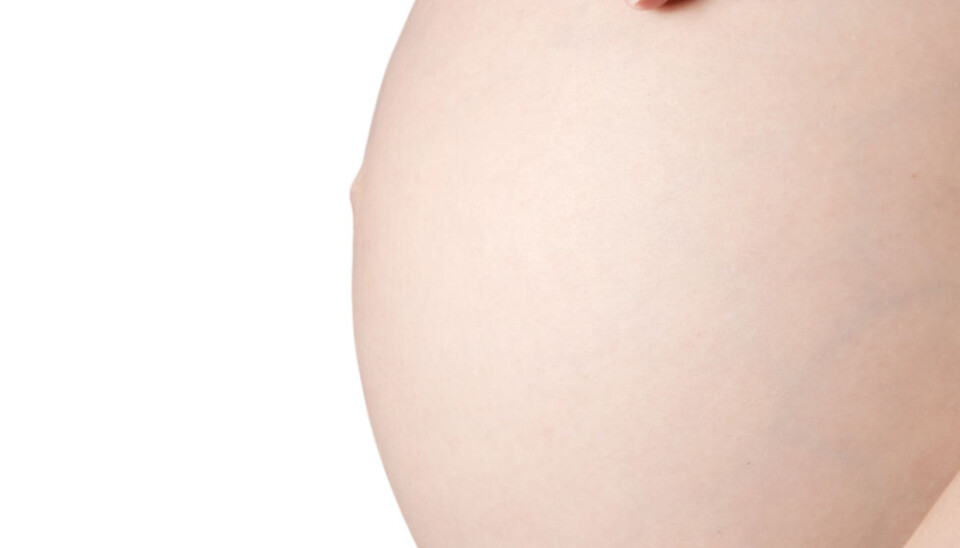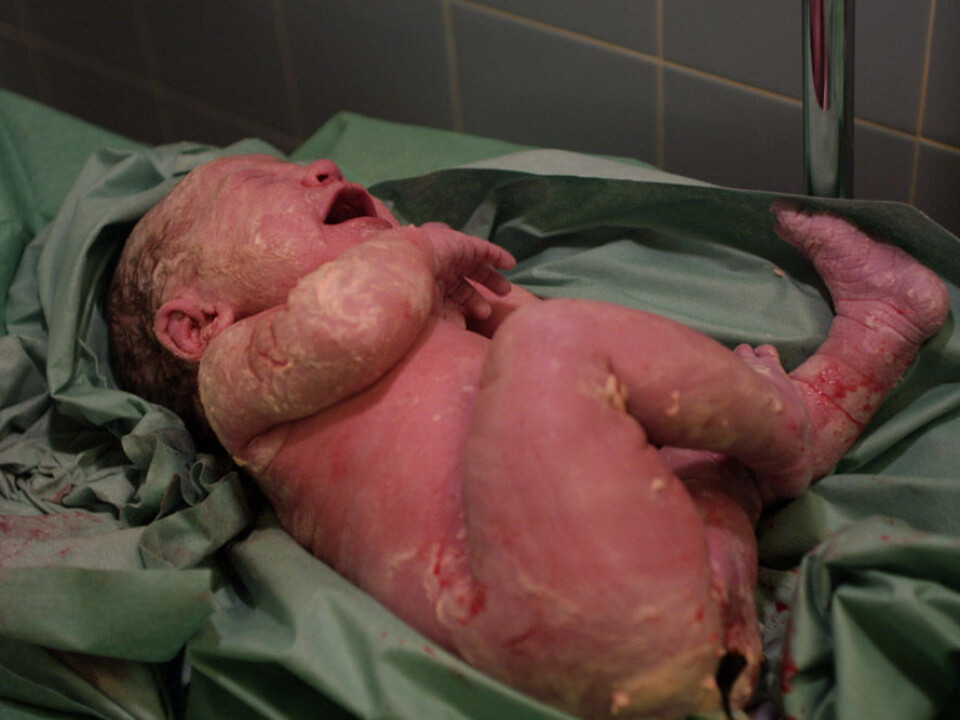
Few opt for caesareans
Norwegian women are not too posh to push. Most wish to give birth vaginally. Those who request caesarean sections have good reasons to do so.
Denne artikkelen er over ti år gammel og kan inneholde utdatert informasjon.
The general impression that a mounting number of women choose to have caesareans for cosmetic or convenience reasons does not correspond with Norwegian reality.
There has been an increase – in 2009 17 percent of births by Norwegian mothers were by caesareans. In the 1970s that share was only two percent.
But the explanation is not that women have become “too posh to push”.
Several factors

Dr. Dorthe Fuglenes is a specialist at Drammen Hospital, a little west of Oslo, and she recently earned her doctorate degree in caesarean sections at the University of Oslo.
She attributes the rise in such deliveries to several factors. In part it’s because the average age of women giving birth has risen, which poses greater risks in a pregnancy.
There are also more women with illnesses getting pregnant, many are overweight, there are more twins being born, and a rising number of foetuses are in the breech position, which all are reasons for caesarean births.
“So, much of the increase can be explained medically, but this is also about women’s preferences and doctors’ attitudes,” she says.
Fuglenes is first author on a study of c-sections that uses data from women in Norway. The source of the data was the Norwegian Institute of Public Health, which has gathered the information in a mother and child cohort study.
Six percent
Over the years in week 30 of their pregnancies 66,000 women were asked which delivery method they’d prefer if it were up to them.
Six percent of the women said they would choose caesareans and about four percent strongly wished for this option.
“That’s a relatively small share wanting a caesarean,” comments Fuglenes.
There’s also no certainty that the trend to prefer such a delivery is on the rise as there is no previous reliable data on the subject.
“Weighing in on the side of a preference for caesareans are negative experiences from previous births, prior use of caesareans or apprehensions about giving birth,” she says.
Two of these factors are only found among women giving birth at least the second time.
Are women growing afraid to give birth?
The study shows twice as many women who have already given birth at least once had a strong wish for a c-section.
“The baggage they have with them from the first birth influences the wish for a caesarean the second time around,” says Fuglenes.
Apart from the two factors negative experiences from previous births and previous c-sections, there is no difference between first-timers and women who have given birth before as regards a preference for caesareans.
Doubts about estimates
It’s been estimated internationally that one out every ten c-sections can be attributed to the preferences of the pregnant women. Fuglenes has her doubts about that.
She points out that it is very hard to find out how many caesareans occur simply because women have requested them.
“The matter of maternal preference is not clearly defined. For instance, when is it entirely due to the mother’s wish and when is it because of anxiety about giving birth? You can’t always say it’s the mother’s wish without considering other factors,” says Fuglenes.
“There’s a wide disparity among international estimates and the data registration they’re based is generally poor,” she says.
A mother’s wish can also be medically founded. In research literature “caesarean delivery on maternal request” refers to a scheduled caesarean carried out at the end of the third trimester in the absence of medical grounds.
“There are no certain figures on this. I think it’s relatively rare, as indicated by our study,” says Fuglenes.
Difficult balance
Nevertheless, there’s an impression – including at the delivery wards – of mounting pressure toward maternal requested c-sections, according to Fuglenes. Can this be a misconception?
“That’s hard to say.” she replies.
Internationally, there are claims that doctors have lowered their thresholds for performing caesareans and that they accept less adequate medical justifications, in part because of maternal requests.
In Norway no woman can simply demand a c-section and get it but women’s requests are included in evaluations of delivery methods.
“A professional medical assessment is also necessary. For healthy women the professional consensus is that vaginal deliveries are better than caesareans,” says Fuglenes.
But decisions are not clear-cut – for example how frightened must a woman be before her fear can be considered a valid medical reason for a c-section?
Could follow up moms after first birth
An array of factors can trigger strong apprehensions or fears among those who have experienced their first birth as traumatic.
“The mother may have been in labour for a very long time, she might have felt she was attended to poorly, suffered excessive pain or experienced complications.”
“Perhaps there have been real complications, or what we in the profession think of as a normal variation of a delivery,” says Fuglenes.
She thinks it’s significant that these are factors the health care system can relatively easily become aware of if the objective is to cut down on c-sections.
“We can provide more systematic follow-ups of women after they give birth the first time and confront their anxiety following negative experiences. This would help prevent fears from growing stronger prior to a prospective next pregnancy.
“We could also give good women who have had caesareans solid information and inform them that it isn’t a given fact that they need to have a c-section the next time they give birth,” says Fuglenes.
Connection between wishes and results
In a new study she has investigated how many women who wish for c-sections actually receive them.
“We see that there’s a link between what women want and what they get – even after we’ve made allowances for medical justifications,” she says.
This is also a dilemma:
“How strong is the fear and when is it important to agree to a caesarean, with all the risks it poses, simply out of consideration for a woman’s fears?” queries Fuglenes.
A caesarean involves a risk of haemorrhaging, infections, post-operative complications and a previous c-section can also cause potential complications during a successive pregnancy.
-----------------------------------------------------------------
Read the article in Norwegian at forskning.no
Translated by: Glenn Ostling






























